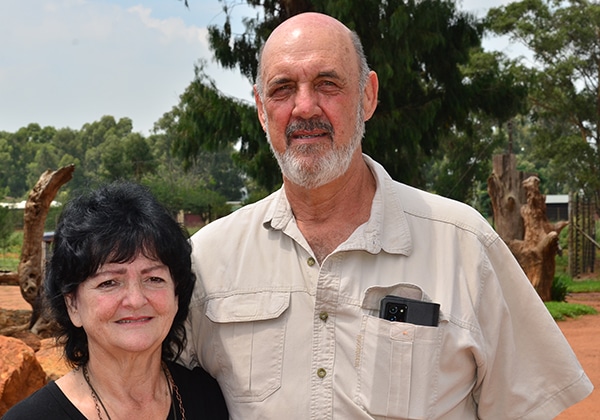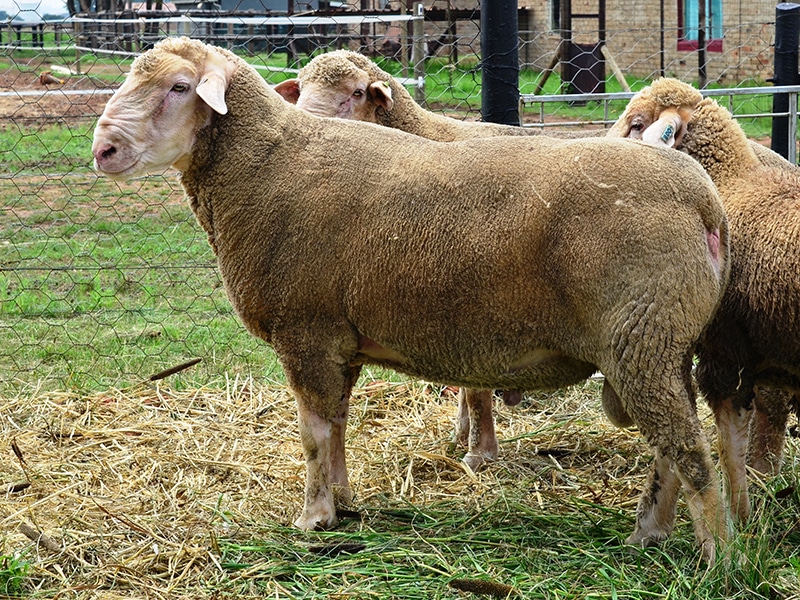Deon and Tina van Wyk’s dream of breeding a sheep ewe that regularly produces triplets throughout her productive life is delivering results. They hope that by the end of the year they will be able to make their sheep breeding model accessible to new small-scale producers who want to start a viable business.
The Van Wyks run their Deonde Triplets Project on their farm outside Delmas in Mpumalanga. The project, which they launched around 19 months ago, holds great promise and can create opportunities for new producers who farm on a small piece of land and who want to gain a foothold in the industry.

The aim of the project is to determine whether this farming method can be profitable and if so, to make it available to producers as a business package. This ‘package’ will consist of a ram and a number of ewes that all carry the triplet gene, as well as an operating manual, estimated budget, and computer software.
Nuts and bolts of the project
To get the project started, the Van Wyks attended auctions all over the country looking for rams and ewes that were part of triplets and/or had triplets in their female lineage. They bought approximately 25 ewes and two rams that fitted the required profile.

Their current model comprises 64 ewes consisting of eight groups with eight ewes each, on an eight-month lambing cycle. So far the project has shown that a lambing percentage of 225% is achievable – that is 18 lambs per group per cycle. However, the long-term effect of this high performance on the ewes’ reproductive abilities will have to be determined over time.
The Van Wyks are extremely happy with their choice of SA Mutton Merinos, as the breed possesses excellent maternal traits and produces high-quality meat and wool.
Deon is amazed at the excellent progress they have made so far. They expected it to take a few years before the ewes bred in the project would reach the required genetic level to consistently produce triplets. The ewes they bred themselves have already come into production and have all scanned pregnant with twins, triplets, and a quadruplet. Unfortunately, quadruplets are not desirable in the project, although it is bound to happen from time to time. It is undesirable because the reproductive performance expected from these ewes is already very high.
The importance of precision feeding, both in terms of quality and quantity, management, and the correct breeding stock cannot be overemphasised.
Multiple streams of income
Income from the model can be generated through four streams. First off, given the specialised feeding of animals and management, one can expect high-quality wool. Secondly, carefully selected registered rams are in high demand. Thirdly, their own experience has shown that registered ewes carrying triplets can fetch anything between R7 000 and R12 000 when marketed. Lastly, lambs can be marketed at five months of age when they weigh between 50 and 60kg.
Provided that a strict and cost-effective budget is followed along with exceptional management, indications are that this farming method could be very profitable.
The production process
Ewes are bred at twelve months of age. The breeding process involves synchronising the ewes, followed by a light hormone treatment. Each group of eight is divided into two, leaving the rams with four ewes each to cover. Rams are withdrawn after 48 hours.
One of their barns doubles as a production unit. It consists of a fully equipped ‘clinic’ where sheep are handled and weighed, eight ewe pens of 30m2 each, eight lambing pens of 3m2, one pen where feed is safely stored, and eight outdoor day camps of 100m2 each. No grazing takes place and greenfeed is provided while the sheep are in the outdoor camps.
The setup also includes a feed shed with six pens large enough to feed the lambs, two large pens in which the rams can overnight, four outdoor camps where lambs are left to roam during the day, as well as two outdoor camps for the rams.
The Van Wyks work closely with nutritionists and a veterinarian to ensure that the animals receive the right feed and supplements to stay healthy.
The lambing process
The ewes are placed in the lambing pens approximately ten days before they are due to lamb. There they receive a portion of the total mixed ration every two hours. The ewes need to be fed more often because the multiple foetuses in the womb tend to reduce the stomach’s capacity. After lambing, the ewes remain in the lambing pens for ten days, and the ration remains the same for the first month.

Clean water is available at all times. The pen, which is thoroughly ventilated, is lined with a thick layer of grass. Urine tests are performed daily to monitor deviations, specifically in respect of ketones and pH balance.
Trained staff monitor the ewes during the day and a camera system is used at night, as it is essential to observe early signs of the lambing process well before lambing takes place.
After lambing and once the ewe has cleaned the lambs, a complete udder inspection is done, and lambs are weighed and treated. Lambs must also be able to suckle properly.
Lambs are weighed daily for the first five days, with lighter lambs weighed daily until they are ten days old. If needed, extra colostrum will be given to help these lambs gain weight. Teat competition among the lambs must also be managed.
Lambs are weaned at approximately 25 to 30kg. They are then moved to a different pen where they are fed until they are five months old. Once they weigh between 50 to 60kg they are divided into three groups: replacement ewes, replacement rams, and slaughter lambs. The replacement ewes and rams are placed on a specific programme until they are twelve months old. At this age, the ewes will weigh between 70 and 100kg and the rams above 100kg.
Some research still required
Deon says they have learned a lot so far and while they have made many mistakes, they were able to correct it systematically. However, much research still needs to be done. They have yet to determine what effect the regular production of triplets has on the ewe over her productive lifetime. The value of physical exercise from birth to weaning, weaning to marketing, ewes during the different phases of their production cycle, and rams must also be determined. While the available day camps allow them to run around, the question is whether this is enough.
Only once the model has been thoroughly investigated and the costs calculated will it be clear with what level of confidence the model can be offered to small-scale producers, Deon concludes. – Andries Gouws, Stockfarm
For enquiries, contact Deon van Wyk on 082 788 0598
or email deon@deonde.co.za.







